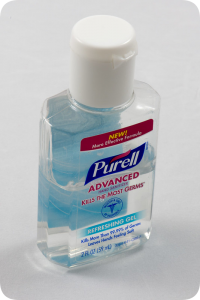 Last week we looked at how fears over coronavirus have caused major events to cancel and governments to restrict travel. Since then, organizers of South By Southwest have called off the festival while Italy has expanded emergency measures for the entire country. That means no public gatherings will be allowed in the Mediterranean nation along with a general ban on travel for all citizens unless they receive special permission. This global escalation of tensions surrounding the Covid-19 virus has sent regular consumers scrambling to purchase goods that could help them stay healthy or be useful in a quarantine. As a result, items like surgical face masks, toilet paper, and especially hand sanitizer are becoming increasingly scarce.
Last week we looked at how fears over coronavirus have caused major events to cancel and governments to restrict travel. Since then, organizers of South By Southwest have called off the festival while Italy has expanded emergency measures for the entire country. That means no public gatherings will be allowed in the Mediterranean nation along with a general ban on travel for all citizens unless they receive special permission. This global escalation of tensions surrounding the Covid-19 virus has sent regular consumers scrambling to purchase goods that could help them stay healthy or be useful in a quarantine. As a result, items like surgical face masks, toilet paper, and especially hand sanitizer are becoming increasingly scarce.
According to Adobe Analytics, demand for hand sanitizer skyrocketed by 1,400 percent from December 2019 to January 2020. Supplies at retailers like Walmart and Walgreens are running low, and one British chain has even imposed a two-bottle per customer limit. Meanwhile on Amazon, major brands like Purell or Germ-X are either completely sold out or available only through third-party vendors at enormous markups. In South Korea people can receive fines up to $42,000 or two years in prison for hoarding hand sanitizer. Before coronavirus appeared earlier this year, analysts estimated that the global hand sanitizer market would be worth $5.5 billion by 2024. Now that it is one of the most sought-after products in the world, however, its value has increased immeasurably.
Still, this doesn’t mean that using Purell is a cure-all against contagious diseases. Although the Centers for Disease Control and Prevention (CDC) recommends using hand sanitizer in order to avoid getting sick, frequent use of soap and water remains the best way to decontaminate one’s hands. This is due to the fact that unlike soap, hand sanitizer does not remove dirt, grease, and some other chemicals. But after years of depending on Purell and Germ-X, many consumers would prefer to use hand sanitizer at least as a supplement to their regular hand washing. In order to create more supply, New York Governor Andrew Cuomo announced that the state would produce as much as 100,000 gallons of hand sanitizer per week through its company Corcraft, an enterprise operated by the state’s Department of Corrections and Community Supervision. Consumer advocates immediately criticized this decision since the company pays prisoners an average wage of 65 cents an hour to manufacture products.
Questions:
- How has skyrocketing demand for hand sanitizer affected worldwide supplies?
- Do you think it is ethical for New York state to use low-paid prison labor to manufacture products like hand sanitizer? Why or why not?
Sources: Sabrina Maddeaux, “Hand Sanitizer Was One of the Most Sought-After Products on the Market, Even Before the Coronavirus Outbreak,” Vox, March 5, 2020; Mary Beth Griggs, “New York Will Use Low-Wage Prison Labor to Make Hand Sanitizer,” The Verge, March 9, 2020. Photo by D Coetzee.
